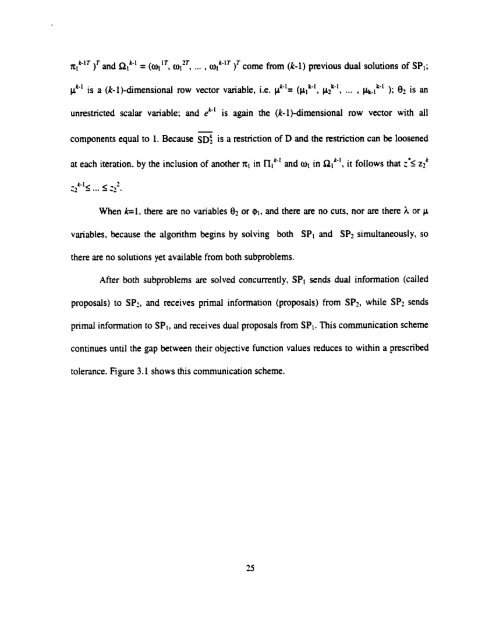X - UWSpace - University of Waterloo
X - UWSpace - University of Waterloo
X - UWSpace - University of Waterloo
Create successful ePaper yourself
Turn your PDF publications into a flip-book with our unique Google optimized e-Paper software.
1T 17 t-IT T<br />
nlk*'T )' and &'-' = (0, ,a1 ... * 0 1 ) corne from (k-1) previous dual solutions <strong>of</strong> SPI;<br />
k- 1<br />
pk-"' is a (k-1)-dimensional row vector variable, i.e. #*'= (pib', p?-', ... , pk-~ );<br />
is an<br />
unrestricted scalar variable; and ek-' is again the (k-1)-dimensional row vector with al1<br />
-<br />
components equal to 1. Because SD: is a restriction <strong>of</strong> D and the restriction can be loosened<br />
at each itention. by the inclusion <strong>of</strong> another nl in t?'"' and oi in R~'", it follows that z.5 2:<br />
- k-I<<br />
-2 - . .. 6 z2'.<br />
When k=l. there are no variables & or $,. and there are no cuts. nor are there )c or C(<br />
variables. because the algorithm begins by solving both SPI and SPr simultaneously, so<br />
ihere are no solutions yet avdable from both subproblems.<br />
After both subproblerns are solved concurrent1 y. SPI sen& dual information (called<br />
proposals) to SP2, and receives prima1 information (proposais) from SP2, while SP2 sends<br />
primal information to SPI, and receives dud proposais from SPI. This communication scheme<br />
continues until the gap between their objective function values reduces to within a prescribed<br />
tolennce. Figure 3.1 shows this communication scheme.
















